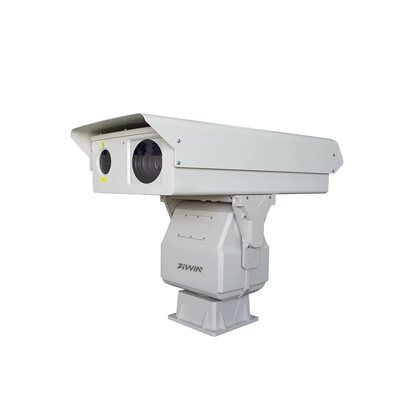Introduction
In the realm of surveillance and security, the ability to see in the dark is a game-changer. Laser night vision cameras have emerged as a powerful tool, providing clear and detailed images even in the absence of visible light. But how do these remarkable devices work? In this article, we will explore the technology behind laser night vision cameras, breaking down the components and processes that enable them to capture high-quality images in low-light conditions. Whether you are a security professional or simply curious about the latest advancements in surveillance technology, understanding the inner workings of laser night vision cameras can offer valuable insights.

The Technology Behind Laser Night Vision Cameras
1. Laser Illumination
At the heart of a
laser night vision camera is the laser illumination system. Unlike traditional night vision cameras that rely on ambient light or infrared (IR) illumination, laser night vision cameras use a laser source to provide illumination. The laser emits a narrow beam of light, typically in the near-infrared spectrum, which is invisible to the human eye but can be detected by the camera's sensor. This laser light reflects off objects in the scene and returns to the camera, allowing it to capture detailed images.
2. Camera Sensor
The camera sensor is another critical component of a laser night vision camera. These sensors are highly sensitive and designed to capture light in the near-infrared spectrum. They convert the reflected laser light into electrical signals, which are then processed to form high-quality images. Modern sensors often feature advanced technologies such as backside illumination and low-noise amplification, which enhance their performance in low-light conditions.
3. Image Processing
Once the sensor captures the reflected laser light, the data is processed by the camera's onboard image processing system. This system uses sophisticated algorithms to enhance the image quality, reducing noise and improving contrast. It also corrects for any distortions caused by the laser beam, ensuring that the final image is clear and accurate. Some advanced systems even offer features like digital zoom and image stabilization, further enhancing the usability of the camera.
4. Optics
The optics of a laser night vision camera play a crucial role in focusing the laser light and capturing the reflected signals. High-quality lenses are used to ensure that the laser beam is precisely directed and that the returning light is efficiently gathered. These lenses are often coated with special materials to reduce reflection and improve light transmission, resulting in clearer and brighter images.
5. Power and Control Systems
Laser night vision cameras require a reliable power source to operate. They are typically designed to be energy-efficient, ensuring long-lasting performance without frequent recharging or battery changes. The control systems of these cameras allow users to adjust various settings, such as the intensity of the laser, the focus of the lens, and the image processing parameters. This flexibility enables users to optimize the camera's performance for different environments and applications.
Real-World Applications
1. Security and Surveillance
Laser night vision cameras are widely used in security and surveillance applications, providing 24/7 monitoring capabilities. They are particularly useful in areas with limited lighting, such as parking lots, warehouses, and remote locations. By capturing clear images in the dark, these cameras help security personnel detect and respond to potential threats more effectively.
2. Wildlife Observation
In the field of wildlife research and conservation, laser night vision cameras offer a non-intrusive way to observe animals in their natural habitats. Researchers can study nocturnal behavior without disturbing the animals, leading to valuable insights into their ecology and behavior. These cameras are often used in remote areas, where traditional lighting solutions are impractical.
3. Industrial Inspection
Laser night vision cameras are also used in industrial settings for inspecting equipment and infrastructure. They can capture detailed images of hard-to-reach areas, such as the interiors of pipelines or the undersides of bridges. This allows maintenance crews to identify potential issues early, reducing downtime and improving safety.
Conclusion
Laser night vision cameras are a remarkable advancement in surveillance and imaging technology, offering clear and detailed images even in complete darkness. By using laser illumination, highly sensitive sensors, advanced image processing, and high-quality optics, these cameras provide unparalleled performance in low-light conditions. Whether used for security, wildlife observation, or industrial inspection, laser night vision cameras open up new possibilities for seeing in the dark. If you are considering enhancing your surveillance capabilities or exploring new applications for night vision technology, laser night vision cameras are definitely worth a closer look.
